This October, the MACMA team will pack their backpacks and be guided by Josep Ahuir Domínguez, archaeologist and cultural heritage manager in our region. In this experience, we will visit the Guaita Towers of the Marina Alta, a historical, landscape and heritage experience along the coast of the Marina Alta.

A LITTLE HISTORY. We know where we come from to decide where we are going.
A coast in danger: the origins of watchtowers
Between the 15th and 16th centuries, the Valencian coasts, and especially those of the Marina Alta region, became a regular target for Barbary and Turkish pirates. The coves, beaches and natural hideouts that we admire today were then vulnerable points of attack. Faced with this situation, a coastal defense system was promoted that combined watchtowers, castles and fortified churches, visually linked to warn of imminent danger.
It was under the reign of Philip II and with the impetus of the engineer Gianbattista Antonelli that the definitive network of fortifications was designed: watchtowers strategically located along the coastline to detect enemy ships and transmit the alert with smoke and fire. These constructions, many of medieval or even Roman origin, were reinforced or rebuilt with Renaissance techniques. The result: A set of towers that watched over the Mediterranean and defended the local population.
Conclusion: a hidden heritage treasure
The watchtowers of the Marina Alta are not just vestiges of the past, but living witnesses of a turbulent era, of a society that defended itself with ingenuity, architecture and community. Today, to visit them is to take a journey through time and geography, a route that unites nature, history and landscape in an unforgettable mosaic for any lover of Valencian heritage.
Tips for the route:
- Bring comfortable shoes and water.
- Some towers are located on private property: please respect the access.
- Check with the local tourist office for guided tours or explanatory materials.
PROPOSED DAYS. Step by step we are making our way.
Discovering the Marina Alta Watchtowers
This route proposes a chronological and geographical journey, from north to south, through the watchtowers still visible in the Marina Alta. Below we leave you a proposal for a thematic route divided into four stages.
Dénia: first line of defense
Stage 1: Dénia – les Marines – les Rotes
Visit to the Almadrava and Gerro Towers. Walk through the historic center of Dénia and its castle.
- Almadrava Tower (1552-53)
Located on the beach of Les Marines, next to the mouth of the Girona River, it is named after an old fishing facility. Recently restored, it preserves the original 12-meter-high truncated conical structure and shows buttresses added in the 20th century.
Located a few kilometers inland, in the municipality of Dénia, it is a fortified residential tower, an example of mixed defense (coast-inland). With a prismatic structure, battlements and sentries, its elevated location allowed it great visibility.
One of the most emblematic due to its shape, which gives it its name. From the cliffs of Les Rotes, it visually dominates a large part of the Dénia coastline. It preserves corbels, embrasures and a coat of arms of Philip II.
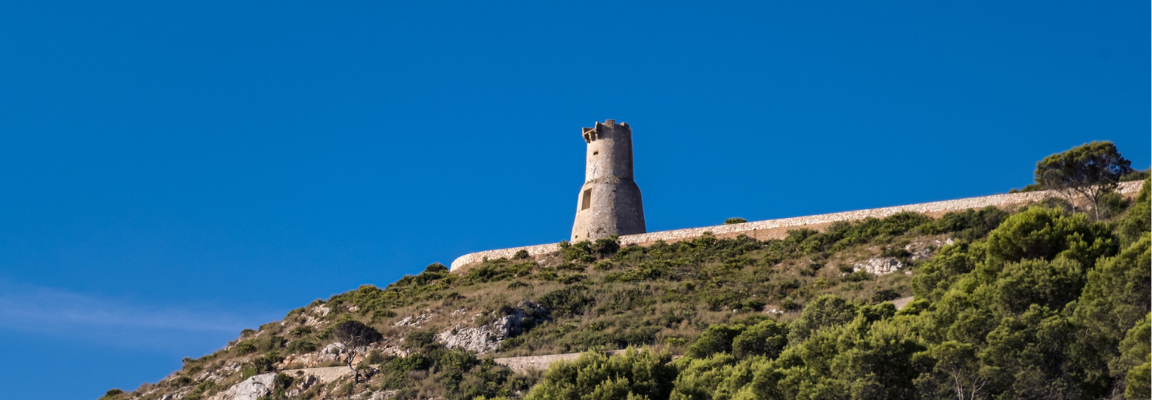
Xàbia: between cliffs and natural viewpoints
Stage 2: Xàbia – Cap de Sant Antoni – Granadella
Route between the lighthouse, the towers of Portitxol, Sant Martí and Ambolo. Descent to Granadella and visit to the remains of the castle.
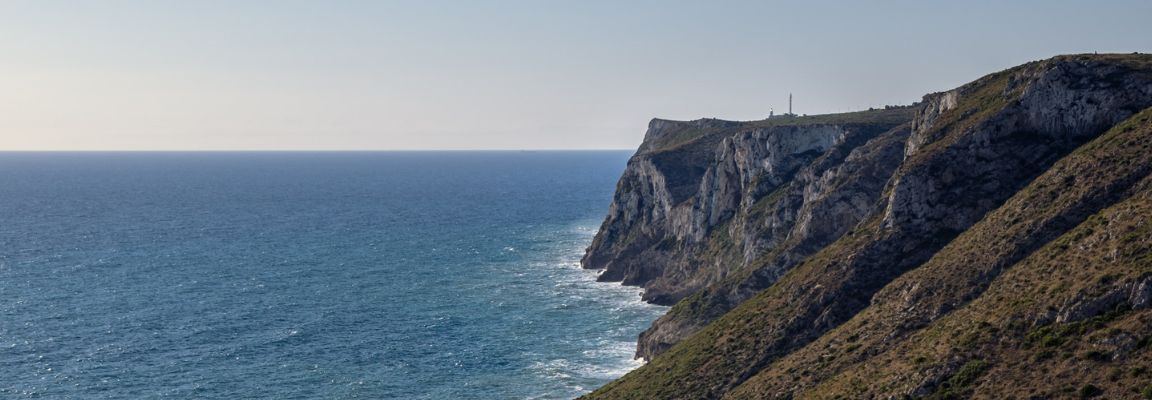
Located where there was an old watchtower, today the lighthouse replaces that construction demolished in 1855. Despite everything, the cape retains its function as a natural viewpoint over Ibiza intact.
Also known as Cap Prim, it is a private but perfectly preserved tower, built in the 15th century and later expanded. Excellent observation point for Portitxol and the adjacent coves.
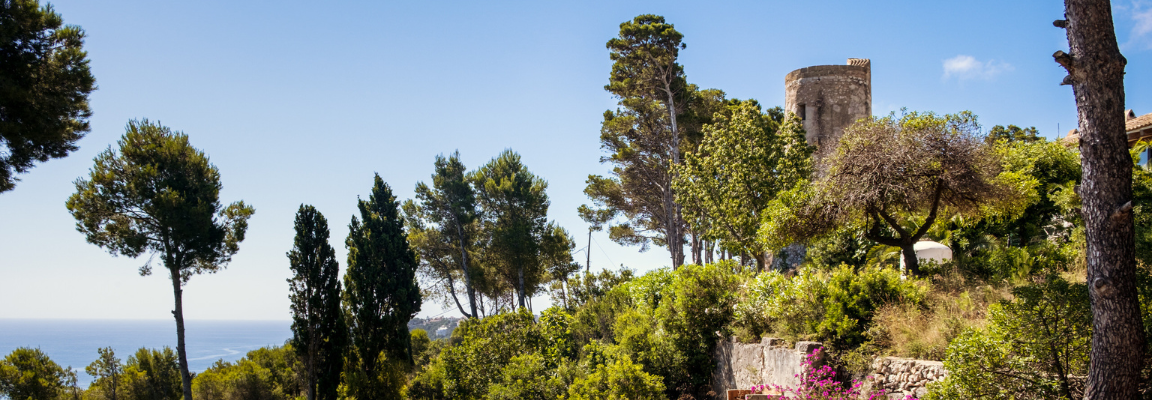
Located a few meters from the Portitxol, also within private property. It has a cylindrical structure and shows the typical Valencian defensive architecture of the time.
Recently restored and located on the impressive cliffs of Cap d'Ambolo, it protected the area between Cap de La Nau and Moraira. Its state of conservation is excellent despite its 16th century origins. This tower is privately owned and cannot be visited.
An 18th-century fortress built on a previous watchtower. Today in ruins, it preserves part of the walls and a cistern. With a bull's-leg-shaped plan, it completed the defensive triangle with Ambolo and Cap d'Or.
Moraira: between towers and castles
Stage 3: Moraira – Cap d'Or – Castle
Climb the Cap d'Or tower. Walk through the center and visit the Moraira castle.
Built on the Antonelli plain (1563), it has no visible entrance door, as it was accessed by a rope ladder. With 11 meters high and solid walls, it dominated the coast between Xàbia and Calp.
Located on the beach of l'Ampolla, the castle is an 18th-century construction that stands out for its bull's-eye plan and a defensive moat. It was restored after years of abandonment.
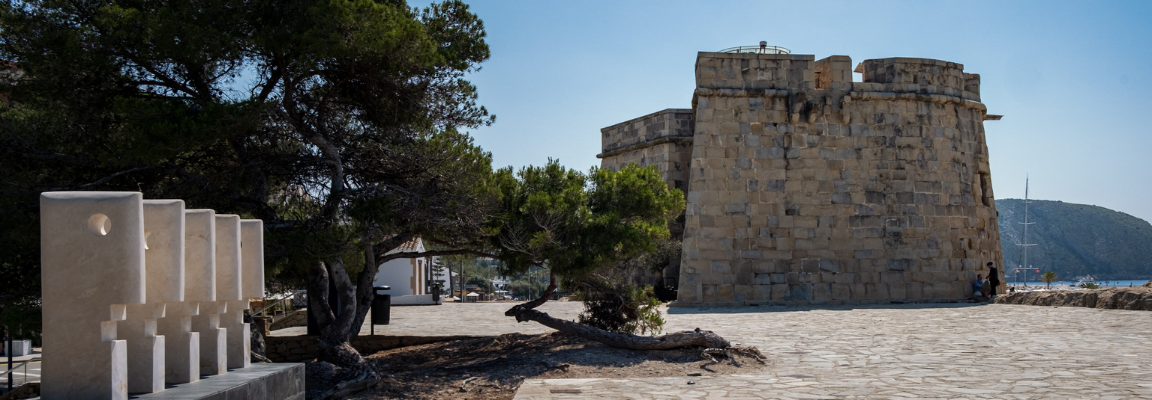
Benissa and Calp: defenses beyond the coast
Stage 4: Benissa and Calp
Discovery of the Torre del Tros de les Calcides in Benissa. Climb to the Morelló mill and the remains of the Castellet in Calp.
- Tower of Tros de les Chalcides (Benissa)
Near the Baladrar ravine, this 16th-century tower served as a refuge for farmers. It has been recently restored and now houses a municipal workshop school.
A 19th-century flour mill built on top of a 15th-century watchtower. With a unique aesthetic, it preserves both military and industrial elements.
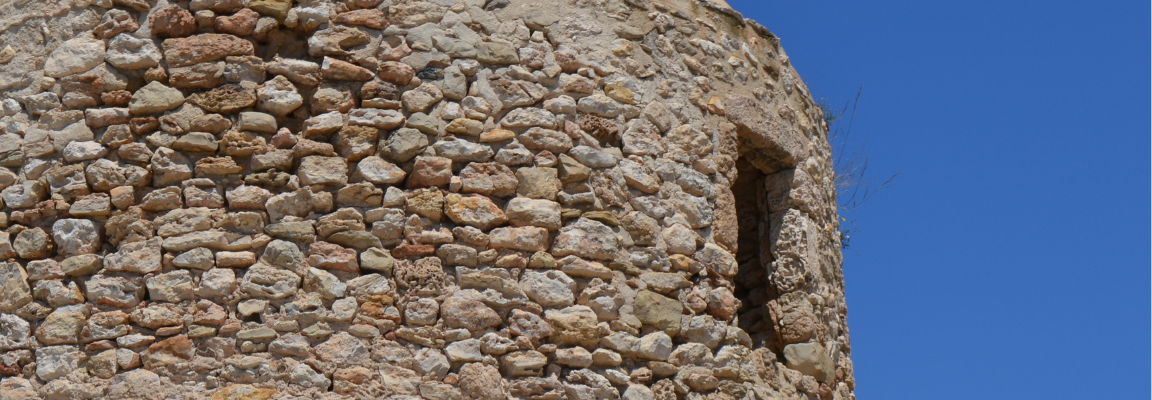
- Torre del Castellet or Mascarat
Remains of a tower to the north of the Sierra de Toix. Although only foundations and part of a wall remain, the site offers spectacular views over the Mascarat ravine.
*This experience is designed to be done in four stages, whether consecutive or not, on different days or however you want to adapt it. We propose some routes, spaces and buildings to visit, but each person can adapt the experience to their abilities, physical resistance and interests. If you want to expand information or elements to visit in each town, you can enter the website of Descobrim la Marina Alta and adapt the experience to your tastes with the backpack.

AND MORE. On the table and in bed at the first cry.
 Where to buy |  where to eat |
 where to sleep |  Activities and others |